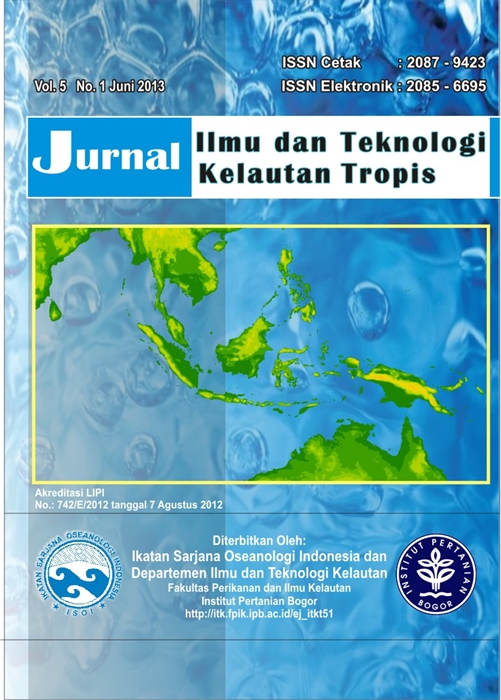Abstract
Spectral measurements of remote sensing reflectance (Rrs) of surface waters in the northeastern Gulf of Mexico were conducted in various seasons in 1999-2000 using Fieldspec Analytical Spectral Devices (ASD) Spectroradiometer. Filtering process was performed on the data to eliminate invalid data. In general, in coastal waters particularly near rivers mouth (water type-2) the Rrs spectrals were relatively low at blue, maximum at green, and decreased to a minimum value at the red wavelength. In offshore waters (type-1), the general pattern of Rrs spectrals were maximum at the blue wavelength and then continued to decline at the green wavelength until the minimum value at the red wavelength except during summer where Rrs spectrals in most offshore area having the maximum value at the green wavelength due to the phytoplankton bloom as a result of freshwater intrusion from the Mississippi river. In general, the patterns and values of Rrs were significantly different among seasons and locations. Results showed that Rrs values at the blue wavelength (λ=400 nm) were generally higher in the spring than in other seasons ranging of 0.007-0.018 sr-1 in offshore waters and 0.004-0.015 sr-1 in coastal waters. During spring, Rrs values at the green wavelength (λ=500 nm) were also higher than in other seasons ranging of 0.005-0.013 sr-1 found in coastal waters. However, during summer in coastal waters, the maximum values of Rrs spectrals were found in different green wavelength on different locations showed the differences in the type and composition of phytoplankton, organic materials, and suspension matters at those locations.
Keywords: remote sensing reflectance, phytoplankton, offshore, coastal, Gulf of MexicoAuthors
This work is licensed under a Creative Commons Attribution 4.0 International License.
Jurnal Ilmu dan Teknologi Kelautan Tropis i is an open-access journal, meaning that all content is freely available without charge to the user or their institution. Users are allowed to read, download, copy, distribute, print, search, or link to the full texts of the articles in this journal without needing to request prior permission from the publisher or the author.
All articles published by Jurnal Ilmu dan Teknologi Kelautan Tropis are licensed under the Creative Commons Attribution 4.0 International License. This allows for unrestricted use, distribution, and reproduction in any medium, provided proper credit is given to the original authors.
Authors submitting manuscripts should understand and agree that the copyright of published manuscripts is retained by the authors. Copyright encompasses the exclusive rights of authors to reproduce, distribute, and sell any part of the journal articles in all forms and media. Reproduction of any part of this journal, its storage in databases, and its transmission by any form or media is allowed without written permission from Jurnal Ilmu dan Teknologi Kelautan Tropis.


